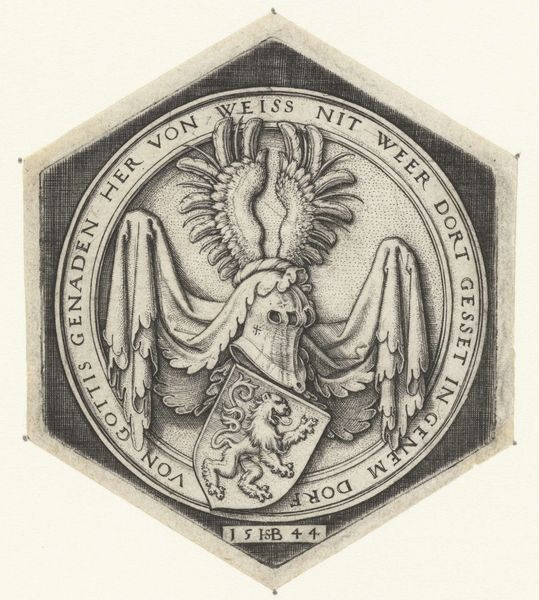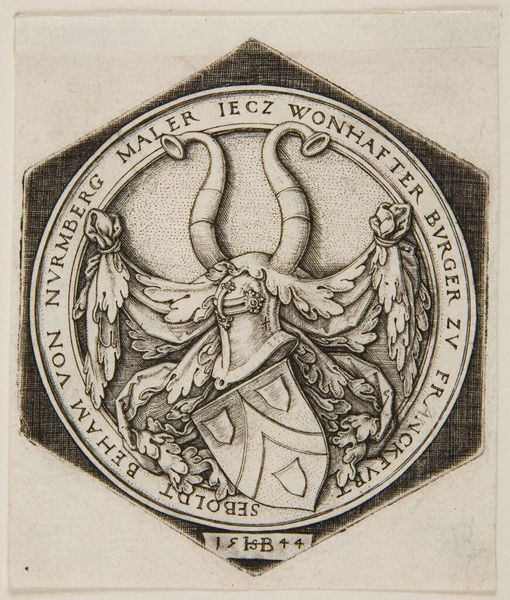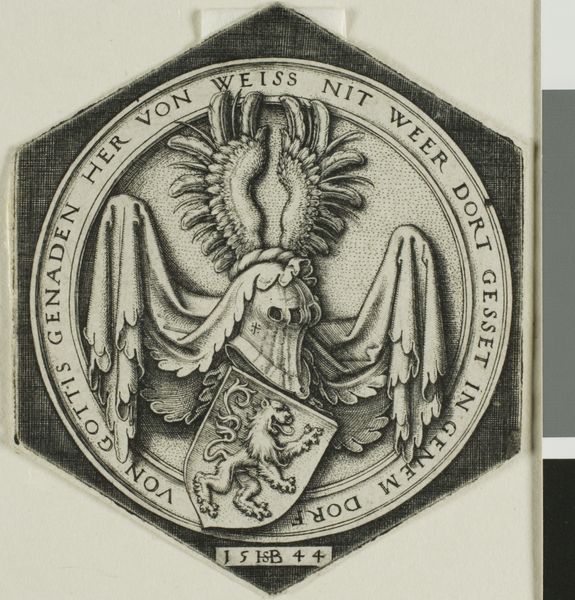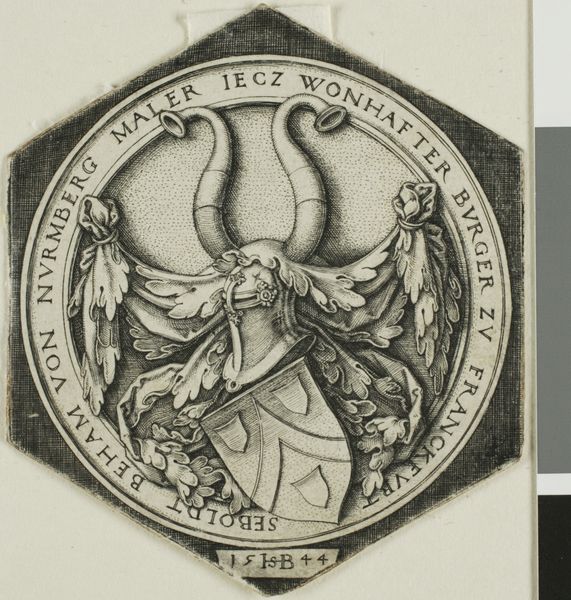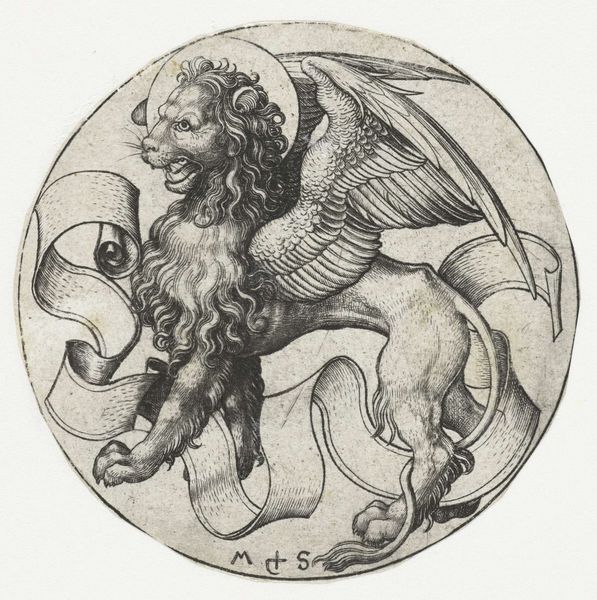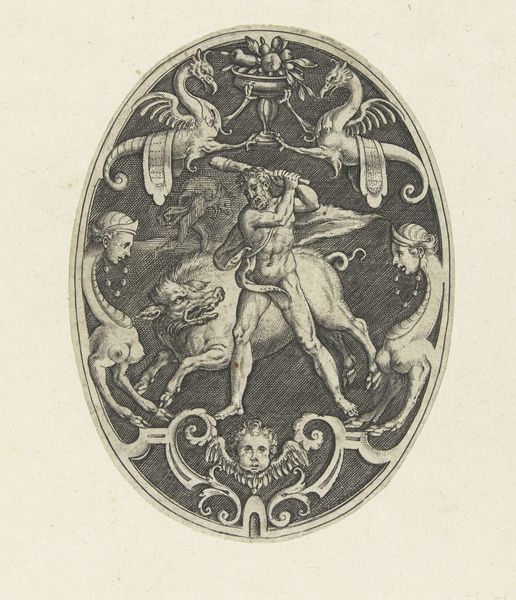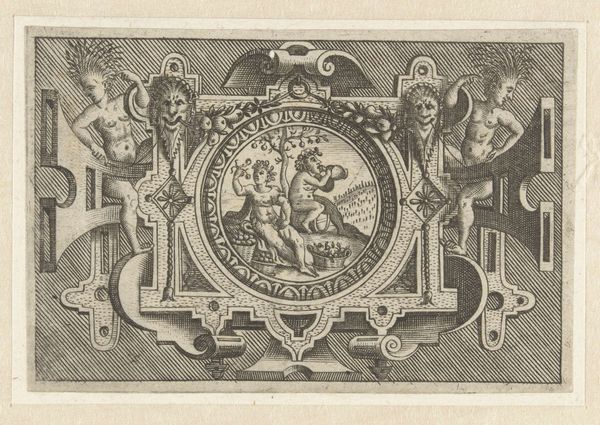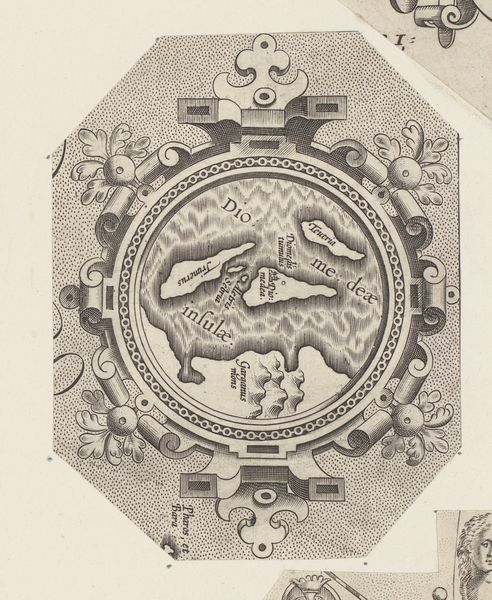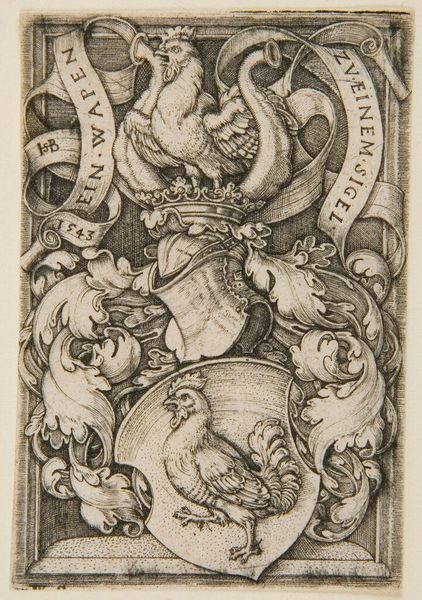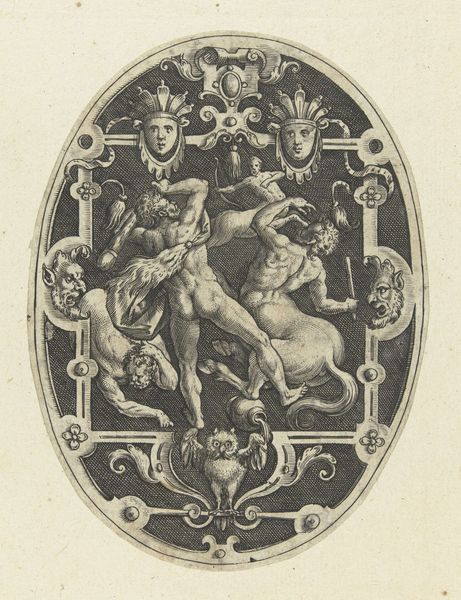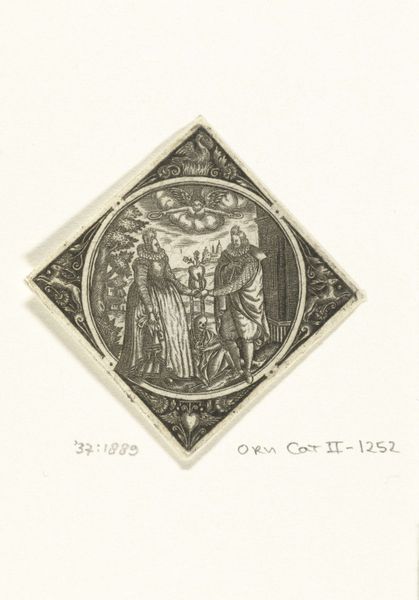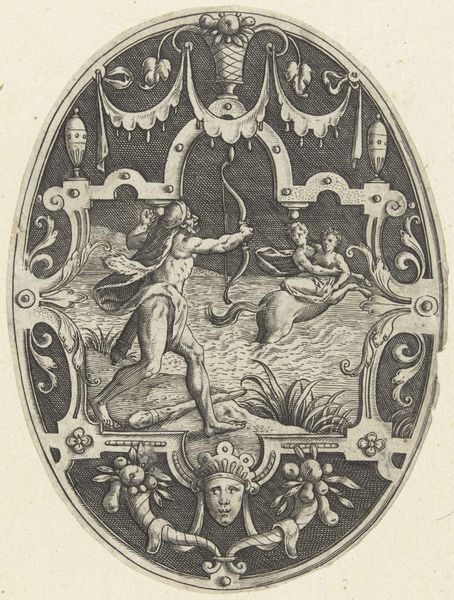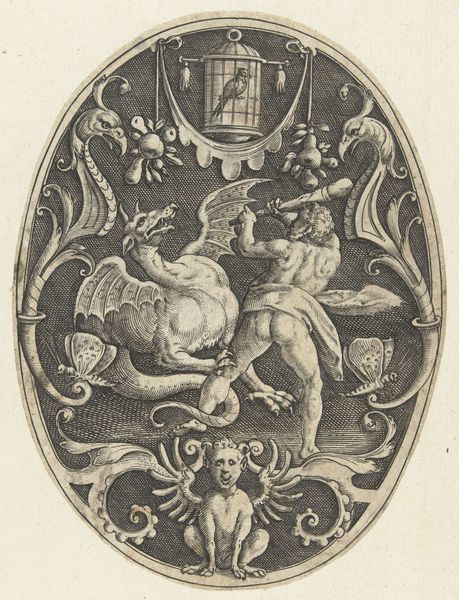
Copyright: Rijks Museum: Open Domain
Curator: This pen and ink drawing is the Familiewapen van Hans Sebald Beham, dating back to 1544. It's currently held at the Rijksmuseum. What’s your initial reaction? Editor: My first thought is that it’s quite ornamental. But what interests me is the overt display of power and social standing it conveys—the shields, wings, and even the inscription seems to project the sitter’s significance. Curator: I see what you mean. However, my attention is immediately drawn to the fine detail rendered through ink. Consider the precise line work creating areas of depth with a stark range of values, producing remarkable clarity through careful shading. The composition is balanced, and the circular shape draws the eye. Editor: That’s a fair point, the craftsmanship is indeed remarkable. But isn't this more than just an aesthetic display? These emblems, rooted in medieval tradition, signal identity, lineage, and perhaps even political affiliation. Beham's artistic prowess is certainly evident, yet I'd argue its true value lies in its ability to articulate and cement social hierarchies. Curator: I wouldn’t disagree entirely, context is crucial. I do wonder, though, if such concerns risk obscuring the artistry? Doesn't analyzing it primarily as a cultural artifact limit our understanding of the work as an aesthetic object? Editor: Perhaps. But I feel there's an opportunity here to examine the tension between personal expression and the broader political landscape in Renaissance Germany. The symbolism employed tells us as much about societal norms as it does about Sebald Beham himself. Curator: That push and pull between individual and collective identities is certainly present here. Seeing both is important to understanding how our interpretation enriches the whole. Editor: Absolutely, acknowledging how an artwork operates both visually and culturally creates a richer appreciation.
Comments
No comments
Be the first to comment and join the conversation on the ultimate creative platform.
